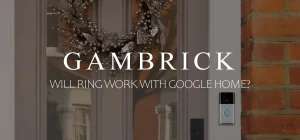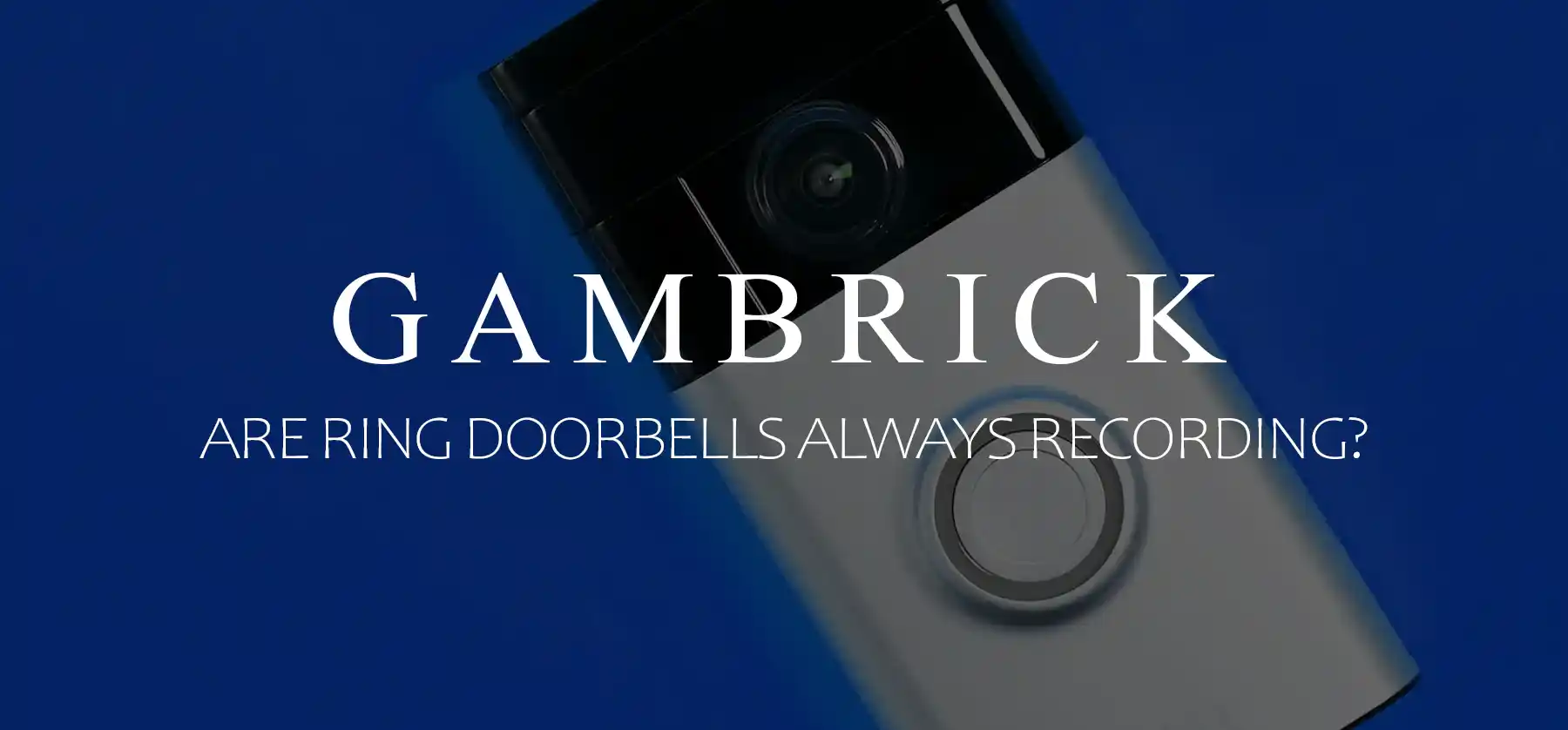
Are Ring Doorbells Always Recording?
Ring doorbells are designed to help secure a home through video monitoring and recording. But they don’t continuously record 24/7. Instead, they’re triggered to record based on specific events or actions. This design allows you to monitor suspicious activities or see who’s at the door without storing hours of unnecessary footage.
The primary reason a Ring doorbell starts recording is due to motion detection. When the device senses movement within its field of view, it begins recording, capturing activity in the area.
This is a useful feature for monitoring unexpected visitors, potential security threats, or keeping an eye on package deliveries.
Users can manually initiate a live view or a recording through the Ring app whenever they want to monitor their home.
A Ring doorbell provides real-time notifications and live viewing for free without a subscription. But a Ring Protect Plan is required to store, record, and share past recordings. When someone presses the doorbell button or Ring detects motion, you’ll be notified on a connected smart device and the event will be recorded to the cloud, because Ring Doorbells are wireless.
However, without the subscription, videos won’t be saved to the cloud.
A Ring device saves its recordings to a cloud-based storage system managed by Ring. Cloud storage ensures that even if the physical device is tampered with or stolen, the footage remains safely stored online and accessible.
Unless your Ring doorbell is triggered, it’s not recording continuously. However, you can still access live view at any time via the Ring app. I really love this feature because it limits unnecessary recordings, but I can still see what’s going on in front of my house any time I want.
So, although a Ring Doorbell isn’t always recording, you can always see what’s going on by using the Ring app.

Do Ring Doorbells Record All The Time?
Ring video doorbells don’t record continuously by default. Instead, they’re designed to record based on specific triggers, which helps conserve battery life and minimize unnecessary footage. This is actually one of my favorite features because it limits non-essential recordings.
The primary triggers that make a Ring doorbell start recording are motion detection within its field of view and when someone presses the doorbell button.
Although you can’t remotely ring the bell or trigger a motion alert, you can initiate live view and video recording at any time via the Ring app.
Triggers help capture the most important events, such as unexpected visitors or potential security threats, without sifting through hours of uneventful video like cars passing by or pedestrians.
However, if you want continuous recording, Ring offers a feature called “Snapshot Capture.” While this doesn’t provide full-fledged video recording, it takes regular snapshots throughout the day, giving you an overview of what happened between events.
For actual continuous video recording, certain models, like the Ring Video Doorbell Pro, can use a “Ring Protect Plan” subscription to access the “24/7 Continuous Video Recording” feature. This allows users to capture and store continuous footage for up to 60 days.
Because Ring cameras don’t record continuously, they’re generally a safe wireless doorbell for renters.
While Ring doorbells are primarily event-triggered, options exist for users seeking more continuous monitoring at an additional cost, which makes them very effective security cameras.
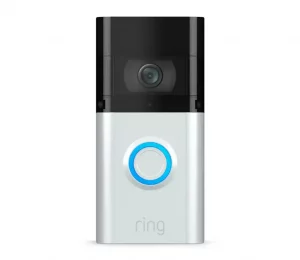
Why Don’t Ring Doorbell Cameras Record All The Time?
Ring doorbell cameras are designed to optimize battery life, storage space, and data usage. Which is why they don’t record and store footage all the time by default. Instead, they focus on event-triggered recordings such as motion or doorbell button presses. This way, they only record things you actually want to see and not unnecessary events.
There are both pros and cons to recording video constantly.
On the positive side, continuous recording ensures that no activity is missed. You’ll have a complete record of events around the property.
But, continuous recording needs a lot more storage space, consumes more battery power, and uses more data. This can lead to increased costs and maintenance.
The exact amount of space required for continuous recording varies based on video quality, compression, and other factors.
My personal Ring records about 30 minutes of footage per day due to motion triggers and button presses x 50 MB/minute = 1,500 MB or 1.5 GB per day. If I recorded all the time I would need over 2 TB of storage per month.
Over time, this accumulates, making cloud storage, which typically comes with monthly fees, more expensive.
Battery drainage is another concern.
Ring doorbells operating on battery power drain much faster when continuously recording. Instead of lasting several months on a charge, the battery may only last a few weeks or even days, depending on the specific device and its settings.
This would require you to recharge or replace batteries frequently.
Continuous recording would also result in substantial data use. Constantly uploading high-definition video to the cloud would strain your internet bandwidth. This can lead to additional costs if you have a capped data plan.
While continuous recording captures every moment, the demands on storage, battery life, and data generally make it a bad idea.
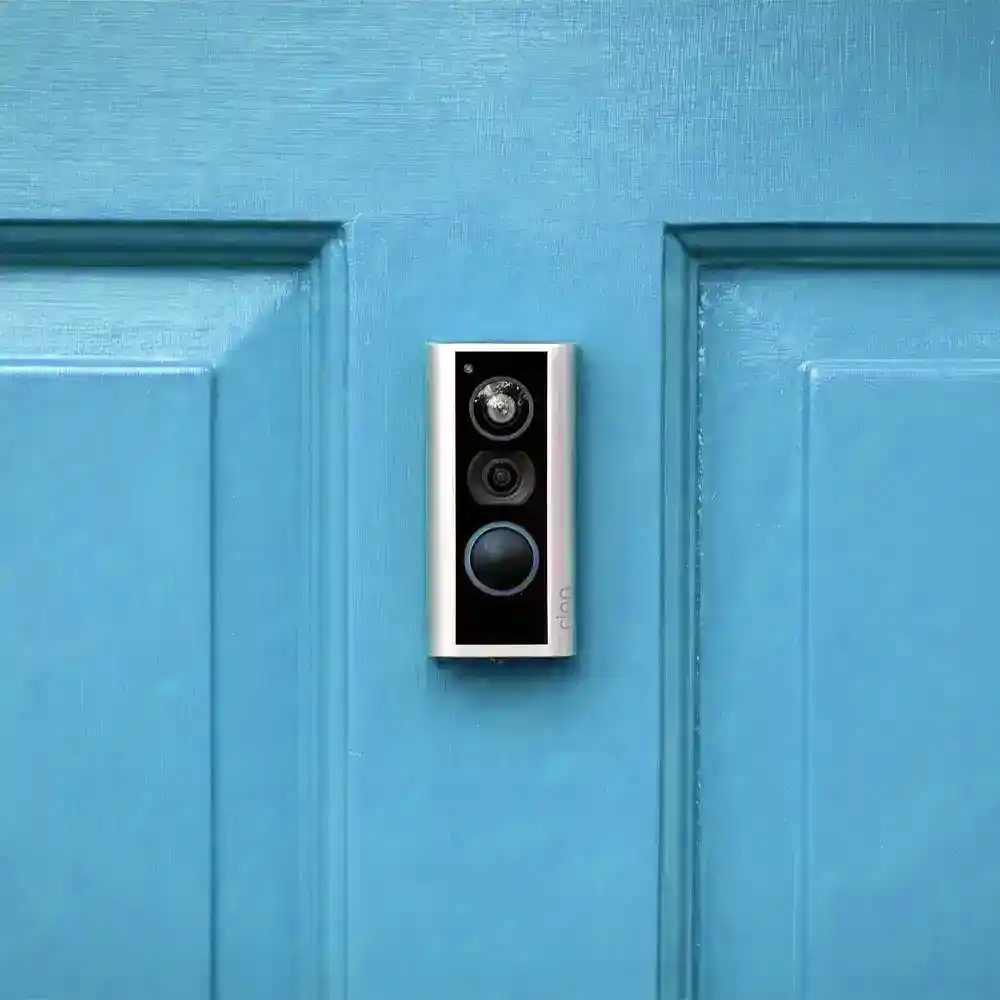
When Do Ring Video Doorbell Cameras Record?
Ring doorbell cameras record video based on specific triggers rather than constant monitoring. The design ensures more efficient battery life, storage space, and data usage, allowing you to focus only on the most important events.
Several events can trigger a Ring doorbell to start recording. The primary triggers include motion detection and when someone presses the doorbell button.
Depending on the sensitivity settings, motion events might include a passing car, a person walking up to the door, or even a pet moving in the camera’s field of view.
When someone presses the doorbell button, the device notifies you via the Ring app. It then automatically starts recording, providing both video and audio of the encounter.
Once a recording is triggered, video footage is uploaded to Ring’s cloud servers if you have a subscription.
You’ll receive a notification on your connected devices, such as smartphones or tablets, alerting you to the event. You can then view the live feed and the recorded clip, interact with the person at the door through two-way audio, or simply monitor the situation.
However, access to these recordings depends on whether you have a Ring Protect Plan or not.
With a Ring Protect Plan, the video recordings are stored in the cloud for a specified period (e.g., 60 days in the U.S.). This lets you review, share, and save the recordings using the Ring app.
Without a subscription plan, you’ll will receive real-time notifications and can view the live event. However, you won’t be able to access the recorded video later.
In essence, Ring doorbells are designed to record based on specific triggers. However, these recordings are only saved if you have a Ring Protect Plan.
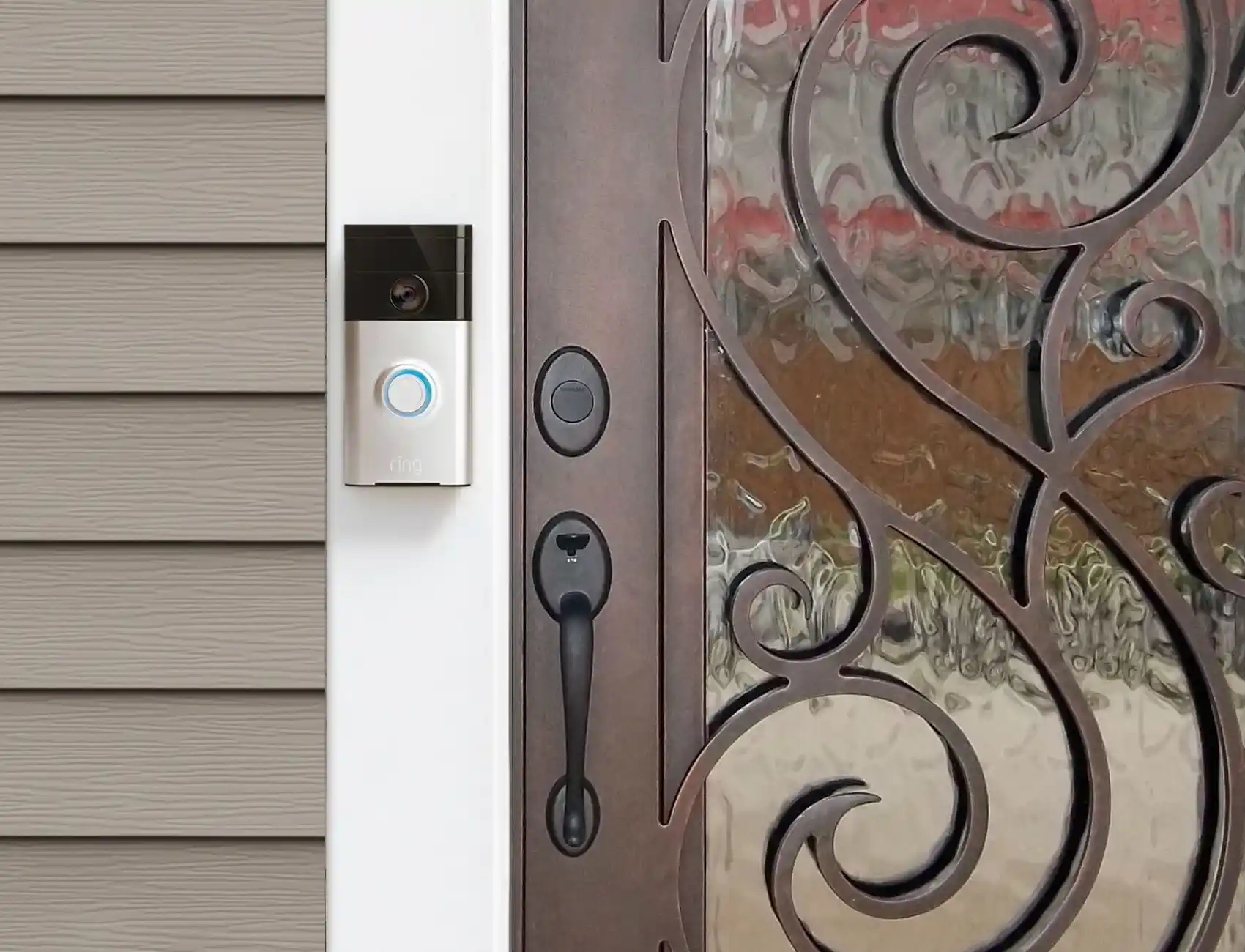
Ring Doorbells Start Recording When They Detect Motion
Ring Video Doorbell cameras will notify you via the Ring app when they detect motion within a designated zone in front of the camera.
Without a Ring Protect subscription, you’ll be able to see live video and use two way talk, but the encounter won’t be recorded.
However, if you have a subscription to the Ring Protect plan, the encounter will be saved to the cloud so you can play it back later.
If the activity appears suspicious, you can notify the authorities using the app.
A standout feature of a Ring camera is the Ring Alarm system. When movement is spotted, the system instantly turns on all the linked cameras on the property. This automatic activation functions like a conventional alarm system and records video to the cloud.
By default, video recordings are set to just 20 seconds each. However, they can record longer if the event is ongoing. For example, if someone is at the door talking to you via two-way talk for a longer time or motion in front of the sensors continues for longer than 20 seconds.
However, if you want a longer recording, you can adjust the recording time in the Ring app.
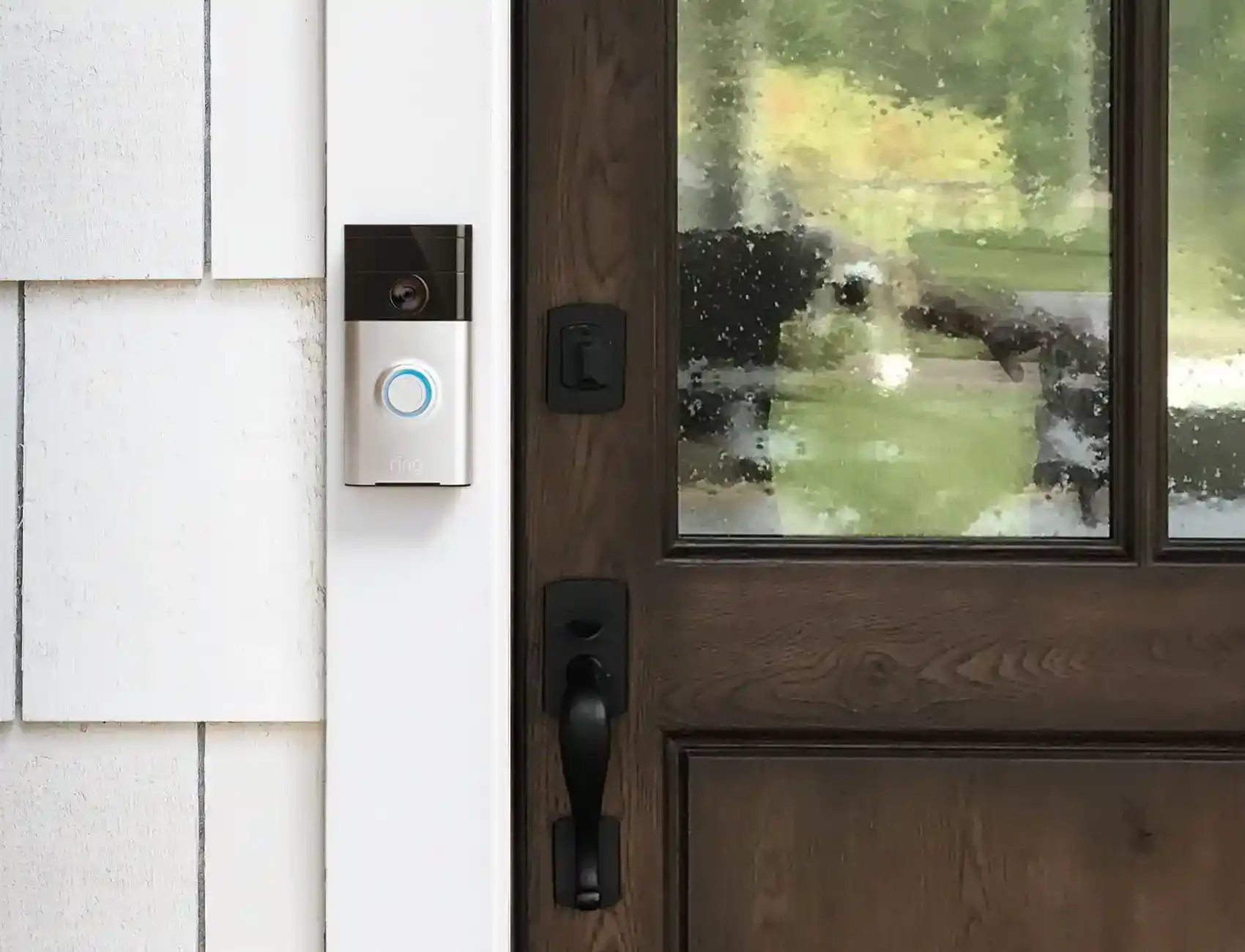
Ring Doorbells Record When The Button is Pressed
All Ring Doorbells are designed to notify you via the Ring app when the doorbell button is pressed.
But if you have a Ring Protect plan, the device will also automatically record video to the cloud. You can then watch it later using the Ring app.
Without a subscription, you’ll have access to real-time video and two-way audio through the Ring app, but the event won’t be recorded.
Ring currently caps the storage of live view footage to just a few minutes. Typically, most Ring cameras allow up to ten minutes of recording per live view session.
If you want to record more video, including 24/7 recording, I recommend installing a hard-wired Pro model and on-site video storage instead of relying on the cloud.
With your own on site hard drives to store video, you can record as much as you need and store video for as long as you want. I recommend using SSD (Solid State Drive) storage. It’s much faster than a traditional hard drive and more secure.
Are Ring Doorbells Always Listening?
Ring doorbell cameras are designed to detect and respond to motion, not sound. While they do have audio capabilities, allowing for two-way communication, they’re not continuously “listening” in the same way they’re monitoring for motion.
Ring doorbells don’t work like an Alexa device. Sound alone doesn’t activate or trigger a recording on any Ring doorbell model. They only notify you and start recording when they detect motion, or someone presses the doorbell button. They’re not “listening” for commands or sounds to activate.
The only way to trigger a Ring doorbell is with motion or when someone presses the button. Sounds around the device won’t trigger an event.
Once an event is triggered, the doorbell is always “listening” because it’s been turned on. It then stops “listening” when motion or the event is over.
While the event is active, assuming you have a protect plan, whatever it hears will be recorded to the cloud along with video of the event.
How Long Does A Ring Doorbell Record For?
Ring doorbell cameras set to AUTO typically record for a default duration of up to 120 seconds when triggered by motion or a doorbell press. However, once the motion stops, the Ring will stop recording. So, the length of recordings will vary.
Users have some flexibility to adjust motion detection settings and frequency of alerts. But the maximum video recording length for a single triggered event is capped and cannot be extended indefinitely.
With features like “Live View” on certain subscription plans, users can manually initiate and extend recording sessions for longer. Typically this is capped at around 10 minutes.
Ring cameras record continuously only when connected to on-site storage and set to do so in the device settings. By default, they don’t support continuous recording and will only record short video clips when triggered by motion or a button press.
If you set up your Ring device to record all the time, I recommend buying a hard-wired Pro model. Otherwise, you’ll be charging or replacing the battery about once a week. Then install a very large hard drive that can handle lots of video and audio footage. At my home, continuous recording requires about 2 TB of storage space per month.
At What Distance Does A Ring Camera Record?
The distance a Ring camera starts recording is influenced by its field of view and motion sensors. Most Ring doorbells have a wide field of view. Typically they can see around 160 degrees horizontally, and in well-lit settings, they can detect motion around 30 feet away.
How far a Ring can see and how far it can detect motion are different.
A Ring camera’s lens can see very far when you activate real time view in the app or an event is triggered. But the motion detection range of its sensors are only around 30 feet. You can adjust the range of the sensors in the device settings to make them shorter. This helps prevent lots of false recordings. But you can’t make it detect things out of its maximum range.
I like to set my Ring to low sensitivity so it only turns on when someone approaches the door. Setting the motion sensors to high will trigger recordings for unnecessary events like pedestrians and cars.
I tried setting my Ring to its maximum sensitivity and I got tons of alerts and recordings for no reason.
In low-light or nighttime settings, the camera leverages its infrared night vision to detect motion. However, its effective range might be slightly reduced compared to daylight conditions.
The exact distance Ring cameras record varies based on the model you have and factors such as ambient lighting.
It’s important to note that while the camera can “see” very far, its motion sensors will only “detect” movement and trigger an event within around 30 feet.
If you have any questions or comments about a Ring device, email any time.

John Mazzuca | About | More Posts |
Custom Home Builder
John Mazzuca is a custom home designer and builder at Gambrick with over 25 years experience in the construction industry. John has designed, built and/or remodeled hundreds of homes, small buildings, and commercial projects. He writes about business, real estate, home building, and household electronics. His work has been featured in Fox Business, Better Homes & Garden, House Beautiful, and more.







